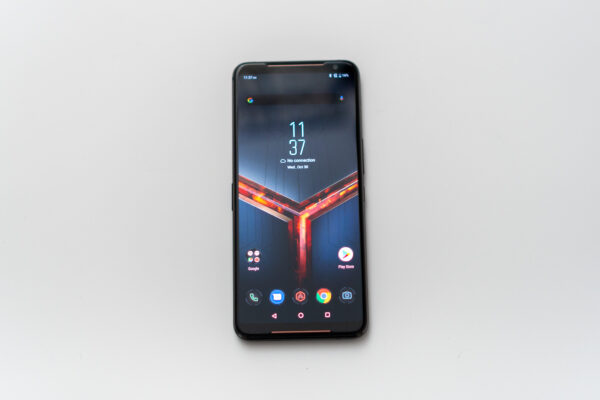
If you’ve absolutely got to have the best gaming smartphone, it’s likely going to have to be the ASUS ROG Phone 2. This is an update to the original ROG Phone, which is itself also an excellent gaming smartphone, upping all the hardware specifications to 2019’s expectations.
The overall styling of the new ROG Phone 2 hasn’t changed much from the original ROG Phone. The back of the phone sports a distinctly gaming-centric design, with matching customised wall paper for the display. ASUS has made sure the ROG Phone 2 stands out as a gamer’s phone, and in the process, they may alienate casual smartphone users or others who don’t want a “gamer look” kind of phone.
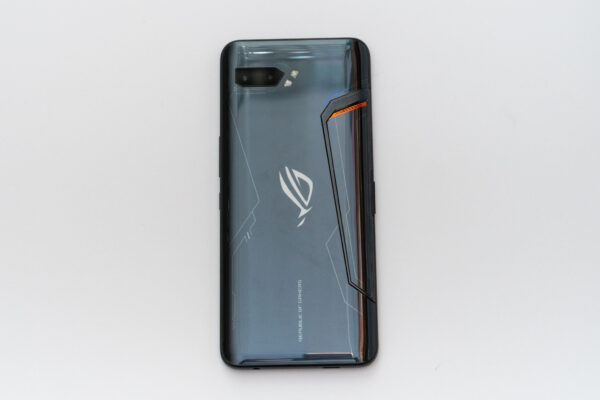
Seeing that the ROG Phone 2 is targeted at hardcore or serious gamers, I don’t think the design would be a significant issue with them.
The ROG Phone 2 is a large and heavy phone. At 170.99 x 77.6 x 9.48 mm and weighing a hefty 240 grams, this is quite a hefty chunk of metal. The large size accommodates a humongous 6.59-inch screen with minimum bezels. Fortunately the ROG Phone 2 doesn’t quite feel that clunky in the hand. Nevertheless, the size and weight is definitely more than most other smartphones, so again, this has got to be for hardcore or serious gamers who care more about gaming performance than physical device heft.
The huge 6.59-inch display on the front is a 1080×2340 pixel resolution AMOLED screen with an aspect ratio of 19.5:9. It’s a really good screen: bright *600 nits), 120 Hz refresh rate, and really sharp. The ROG Phone 2 brings together all key features to deliver a stunning visual experience.
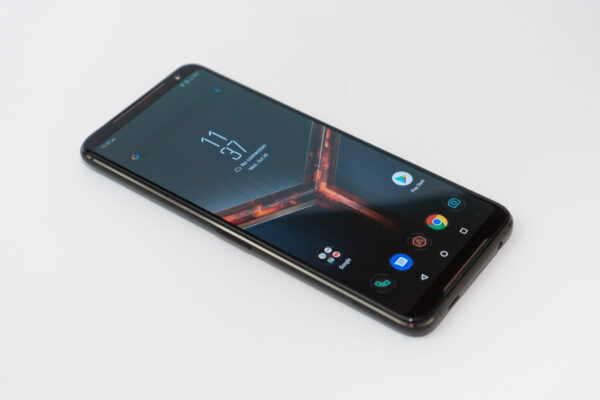
You might have noticed that the ROG Phone 2’s pixel density isn’t as high as many other flagship smartphones. Still, I feel it is good enough, at least for games and videos.
The display is protected by Gorilla Glass 6 glass. There’s no display notch. Instead, you get a pair of really good stereo speakers in the small bezel space above and below the screen. I’m really impressed with the sound that the ROG Phone 2 can deliver from its speakers; it’s something that I immediately noticed when I first powered up the phone. While on the topic of sound, the ROG Phone 2 has a headphone jack at the bottom of the device with a 24-bit/192 kHz DAC.
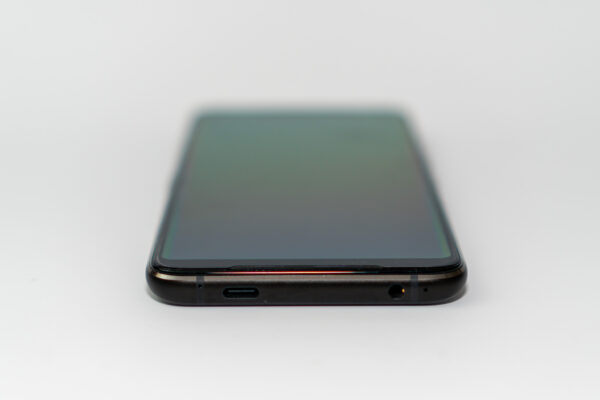
There are three USB Type-C ports on this phone. The first is at the bottom. Instead of being centred like on most phones, ASUS has placed this nearer to the left edge. I find myself always subconsciously trying to find the port opening in the centre; I suppose one will get used to it over time.
The next two USB Type-C ports are on the left side of the phone. They are adjacent together and protected by a rubber cover that needs to be removed and is begging to get lost. One of these ports, the orange one, is reserved for ASUS own accessories, and you cannot plug in your own standard USB Type-C cable to it.
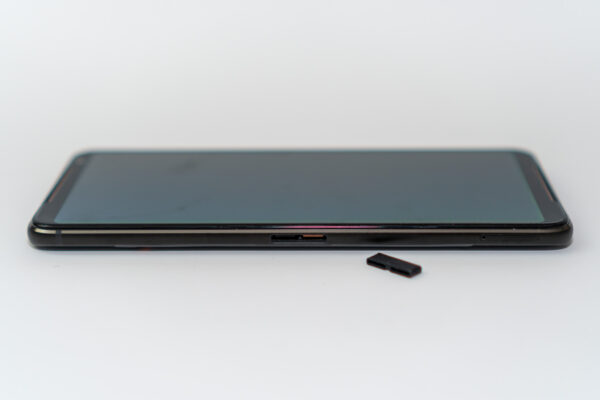
Those USB Type-C ports on the left side come together to attach accessories. ASUS sells a bunch of them, but unfortunately, they all require separate purchase, aside for the AeroActive Cooler 2 fan attachment that is included in the box. This fan keeps the phone up to 5°C cooler, according to ASUS, and includes a USB Type-C port on itself, and a 3.5 mm audio jack.
The power button and volume rocker are on the other side of the phone.
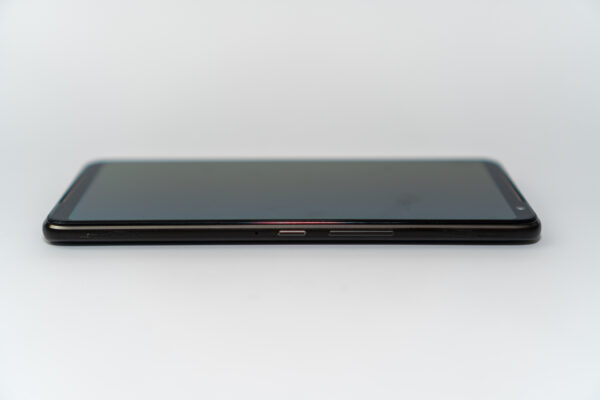
The main camera on the back is a dual sensor setup: 48 MP with f/1.8 wide lens and 13 MP with f/2.4 ultra wide lens. The camera supports PDAF, laser AF, and is capable of video recording up to 2160p at 60 fps, and has a gyro-based electronic image stabilisation.
The front selfie camera has a 24 MP sensor paired with a f/2.2 lens, and supports video recording up to 1080p at 30 fps.
While the ROG Phone 2’s cameras are capable, and there are many shooting mods available, the images aren’t anything outstanding. Just remember this phone is for gaming, not so much for stellar photography.
The ROG Phone 2 supports two forms of biometric authentication: facial recognition and an in-display fingerprint sensor.
For gamers, when the ROG Phone 2 is held in a landscape orientation, the top left and right edges have touch-sensitive zones which act as input buttons. ASUS calls these AirTriggers, and they are designed to behave like triggers found on conventional game controllers.
The ROG Phone 2 is powered by an Qualcomm Snapdragon 855+ with 8 GB or 12 GB of RAM. The 8 GB RAM model comes with 128 GB of storage, while the 12 GB RAM has options for 256 GB, 512 GB or 1 TB of storage.
For connectivity, the ROG Phone 2 supports Bluetooth 5.0 with A2DP, LE and aptX HD profiles. It supports dual-band 802.11a/b/g/n/ac with 2×2 MIMO antennas. It also supports 802.11ad (60 GHz), used to wirelessly communicate with a WiGig display dock. The phone supports dual nano-SIMs with dual 4G standby.
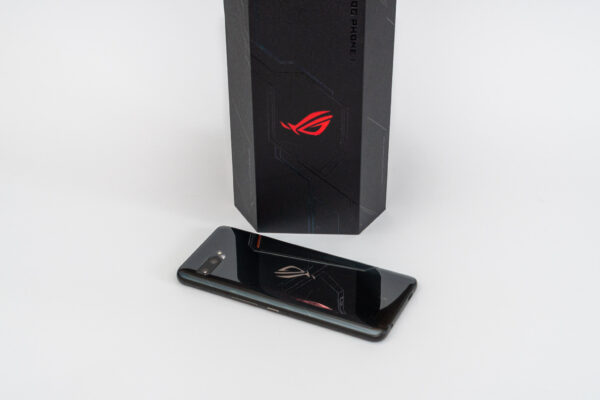
Benchmark results of the ROG Phone 2 are exceptional. Under the new Geekbench 5 tests, the ROG Phone 2 scored:
- Single-core: 744
- Multi-core: 2781
- Compute: 2627
PCMark for Android benchmark produced a score of 11833on the ROG Phone 2. This is the fastest phone I’ve tested so far, and the Snapdragon 855+ proves to be able to pull ahead of the Snapdragon 855 used in most other flagship phones.
The battery is also another exceptional highlight of the ROG Phone 2. It carries a capacity of 6,000 mAh. PCMark for Android battery tests on this phone ran for just 6 minutes shy of 14 hours!
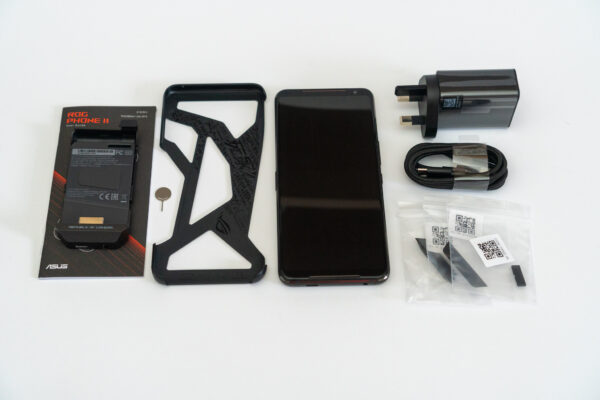
In the box, the ROG Phone 2 comes with the AeroActive Cooler 2 fan attachment, an Aero case, Type-C to C cable, SIM eject pin, USB power adapter (18 W / 30 W), and some documentation.
ASUS has succeeded in creating a fantastic gaming phone in the ROG Phone 2. There are a few missing features like wireless charging and waterproofing that many of us have come to expect in flagship phones. Hardcore and serious gamers, however, are most likely willing to forgive these misses for an otherwise exceptional gaming experience.
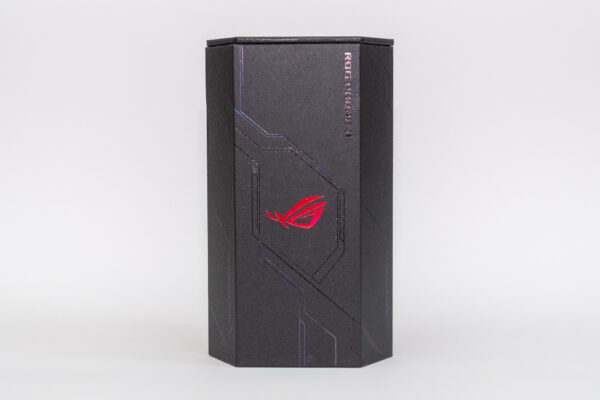
The ASUS ROG Phone 2 retails at S$1,598 for the model with 12 GB RAM and 512 GB storage.
Conclusion
The ASUS ROG Phone 2 is the phone to get for hardcore and serious gamers who only want the most exceptional gaming experience.
Pros:
- Gaming-centric design
- Excellent performance
- Excellent battery life
- Great screen and sound
Cons:
- Large and heavy
- No waterproofing
- No wireless charging
View Comment Policy